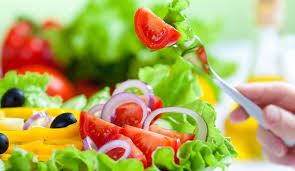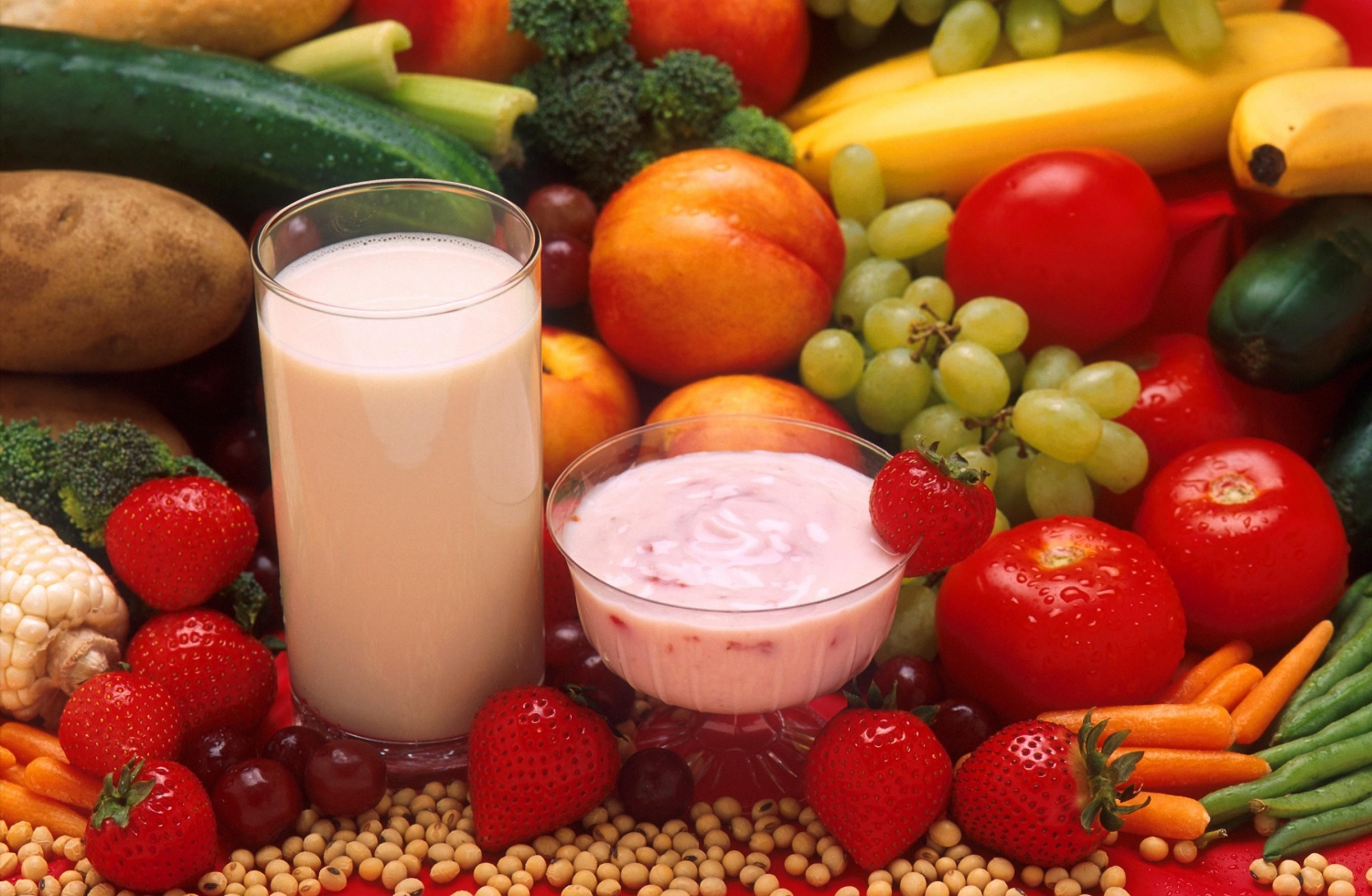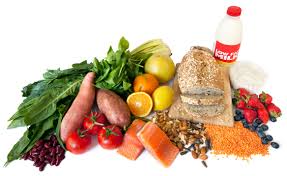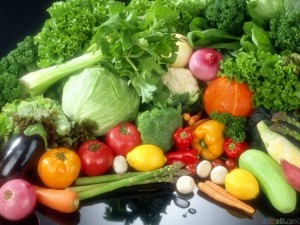Healthy Food Choices Biography
Source(google.com.pk)
Eating clean may sound like an “out there” buzz term, but the basic principles behind this movement are founded on sound nutrition. Once you get used to it, cooking and eating clean recipes is a snap, even during busy weeknights. To make life easier, plan your menu ahead of time and keep your pantry stocked with healthy “clean” foods. All of these “clean” dishes come together in less than an hour and all of them use simple ingredients most people have on hand or can be quickly picked up at the grocery store. For those strictly following a clean-eating diet, these Cooking Light recipes fit the bill. For those who are just interested in what “clean eating” is all about, see how easy (and delicious) it can be.Whole grains are standard fare on the clean diet, and quinoa is the best of the bunch. Not only is it high in fiber, 1 cup cooked gives you 5 grams of fiber, it’s an excellent source of protein, providing all nine essential amino acids and making it a complete protein. It’s slightly crunchy, nutty taste goes well with many nuts, fruits and vegetables plus it cooks up quick in just 20 minutes or less.
Arugula, Grape, and Sunflower Seed Salad
Super clean salads highlight all kinds of fresh, wholesome, unprocessed foods, like vegetables, fruits, whole grains, and more. This one features spicy arugula, sweet red grapes, and another clean eating staple, sunflower seeds. Seeds and nuts are a common ingredient in “clean” cooking because they fill you up, provide hard-to-get nutrients like magnesium, zinc, selenium, and vitamin E, and are chock full of good fats.
When it comes to salad dressings, “clean” dressings are low in fat but still pop with flavor from fresh herbs, zesty spices, or a splash of fruit juice. In this recipe, maple syrup and honey blend with spicy mustard and a dash of vinegar to pack a sassy punch.
Salmon contains omega-3 fatty acids — a type of fat that makes your blood less likely to form clots that may cause heart attacks. Omega-3s may also protect against irregular heartbeats that may cause sudden cardiac death, and they help decrease triglyceride levels, decrease the growth of artery-clogging plaques, lower blood pressure and reduce the risk of stroke. In addition to containing omega-3s, salmon is low in saturated fat and cholesterol and is a good source of protein
Spinach is high in vitamins A and C and folate. It's also a good source of magnesium. The plant compounds in spinach may boost your immune system. The carotenoids found in spinach — beta carotene, lutein and zeaxanthin — also are protective against age-related vision diseases, such as macular degeneration and night blindness, as well as heart disease and certain cancers.
The deep orange-yellow color of sweet potatoes tells you that they're high in the antioxidant beta carotene. Food sources of beta carotene, which is converted to vitamin A in your body, may help slow the aging process and reduce the risk of some cancers. In addition to being an excellent source of vitamins A and C, sweet potatoes are a good source of fiber, vitamin B-6 and potassium. And like all vegetables, they're fat-free and relatively low in calories — one-half of a large sweet potato has just 81 calories.
Vegetable juice has most of the vitamins, minerals and other nutrients found in the original vegetables (except some of the fiber) and is an easy way to include vegetables in your diet. Tomato juice and vegetable juices that include tomatoes contain lycopene, an antioxidant that may reduce the risk of prostate cancer. Some vegetable and tomato juices are very high in sodium, so be sure to select the low-sodium varieties.
Wheat germ is the part of the grain that's responsible for the development and growth of the new plant sprout. Although only a small part, the germ contains many nutrients. It's an excellent source of thiamin and a good source of folate, magnesium, phosphorus and zinc. The germ also contains protein, fiber and some fat. Try sprinkling some on your hot or cold cereal.
It's a snap to incorporate these 10 health foods into a healthy diet. This example of a healthy dinner includes three of the 10 — broccoli, salmon and sweet potatoes.
Almond butter
Don't eat eggs or dairy? Almond butter is an excellent alternate source of protein, and it's filled with monounsaturated fat (one of the good fats). Plus, as Giovinazzo points out, "it's really delicious spread on whole grain bread or paired with a banana or an apple."
Nutritionally, almond butter is comparable to peanut butter, and they each have about 100 calories per tablespoon. Almond butter contains slightly less saturated fat, though—a definite point in its favor, even for people who aren't allergic to peanuts.
Watermelon
As its name suggests, watermelon is an excellent way to hydrate in the morning. What's less well known is this juicy fruit is among the best sources of lycopene—a nutrient found in red fruits and vegetables that's important for vision, heart health, and cancer prevention.
Best of all, watermelon contains just 40 calories per cup, landing it on lists of so-called negative-calorie foods that supposedly burn more calories during digestion than they add in. (Actually, it's a bit more complicated than that, but that's no reason to not eat watermelon!)
Flaxseed
Sprinkling ground flaxseed into a smoothie or bowl of cereal will turn your breakfast into a gold mine of omega-3 fatty acids; just two tablespoons contains more than 100% of your recommended daily intake for those heart-healthy fats. Flaxseed, which has a nutty flavor, also is rich in fiber and lignan, an antioxidant that's been shown to protect against breast cancer.
A word of caution: Whole flaxseeds will pass through your body without being digested, so be sure to buy them ground or grind them yourself with a coffee or spice grinder.
Blueberries
Fresh or frozen, these tiny superfruits pack a big antioxidant punch. Or better yet, a flurry of punches: Studies suggest that eating blueberries regularly can help improve everything from memory and motor skills to blood pressure and metabolism. (Wild blueberries, in particular, have one of the highest concentrations of the powerful antioxidants known as anthocyanins.)
Blueberries are also lower in calories than a lot of other fruits (they contain just 80 per cup), so you can pile them onto your cereal without worrying about your waistline.
Healthy Food Choices Healthy Food Pyramid Recipes Clipart List for Kids Plate Pictures Images Tumblr Quotes 
Healthy Food Choices Healthy Food Pyramid Recipes Clipart List for Kids Plate Pictures Images Tumblr Quotes 

Healthy Food Choices Healthy Food Pyramid Recipes Clipart List for Kids Plate Pictures Images Tumblr Quotes 

Healthy Food Choices Healthy Food Pyramid Recipes Clipart List for Kids Plate Pictures Images Tumblr Quotes 

Healthy Food Choices Healthy Food Pyramid Recipes Clipart List for Kids Plate Pictures Images Tumblr Quotes 

Healthy Food Choices Healthy Food Pyramid Recipes Clipart List for Kids Plate Pictures Images Tumblr Quotes 

Healthy Food Choices Healthy Food Pyramid Recipes Clipart List for Kids Plate Pictures Images Tumblr Quotes 
Healthy Food Choices Healthy Food Pyramid Recipes Clipart List for Kids Plate Pictures Images Tumblr Quotes 

Healthy Food Choices Healthy Food Pyramid Recipes Clipart List for Kids Plate Pictures Images Tumblr Quotes 

Healthy Food Choices Healthy Food Pyramid Recipes Clipart List for Kids Plate Pictures Images Tumblr Quotes 

Healthy Food Choices Healthy Food Pyramid Recipes Clipart List for Kids Plate Pictures Images Tumblr Quotes 

Healthy Food Choices Healthy Food Pyramid Recipes Clipart List for Kids Plate Pictures Images Tumblr Quotes
No comments:
Post a Comment